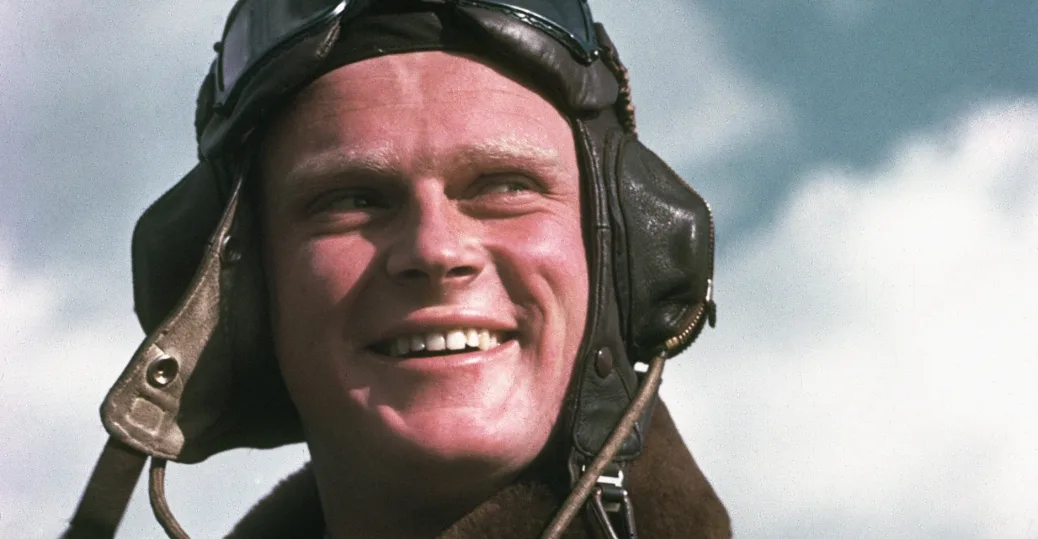By Cody D. Smith
The Second World War saw the introduction of many advancements to watch technology due to necessity of an ever changing battlefield. By the time WWII had taken off, a new kind of warfare was already becoming a determining factor of how maps were won: aviation. The men piloting these steel beasts needed the absolute best tools that watchmaking had available to offer. New types of watches were created with the pilot in mind. They had to be the most precise instruments possible while also maintaining a high degree of robustness. There was no room for error when your life possibly depended on being at the right place at the right time. I want to share with you, the reader, five of what I consider to be the most representative of the best and brightest that watchmakers had to offer the aviator during the Second World War. Keep in mind that there were countless variations of pilot’s watches during WWII, but the following five have left a major imprint on history itself. This article is not meant to give an in depth look at all of their history, but a general overview instead.
5. The British WWW Series
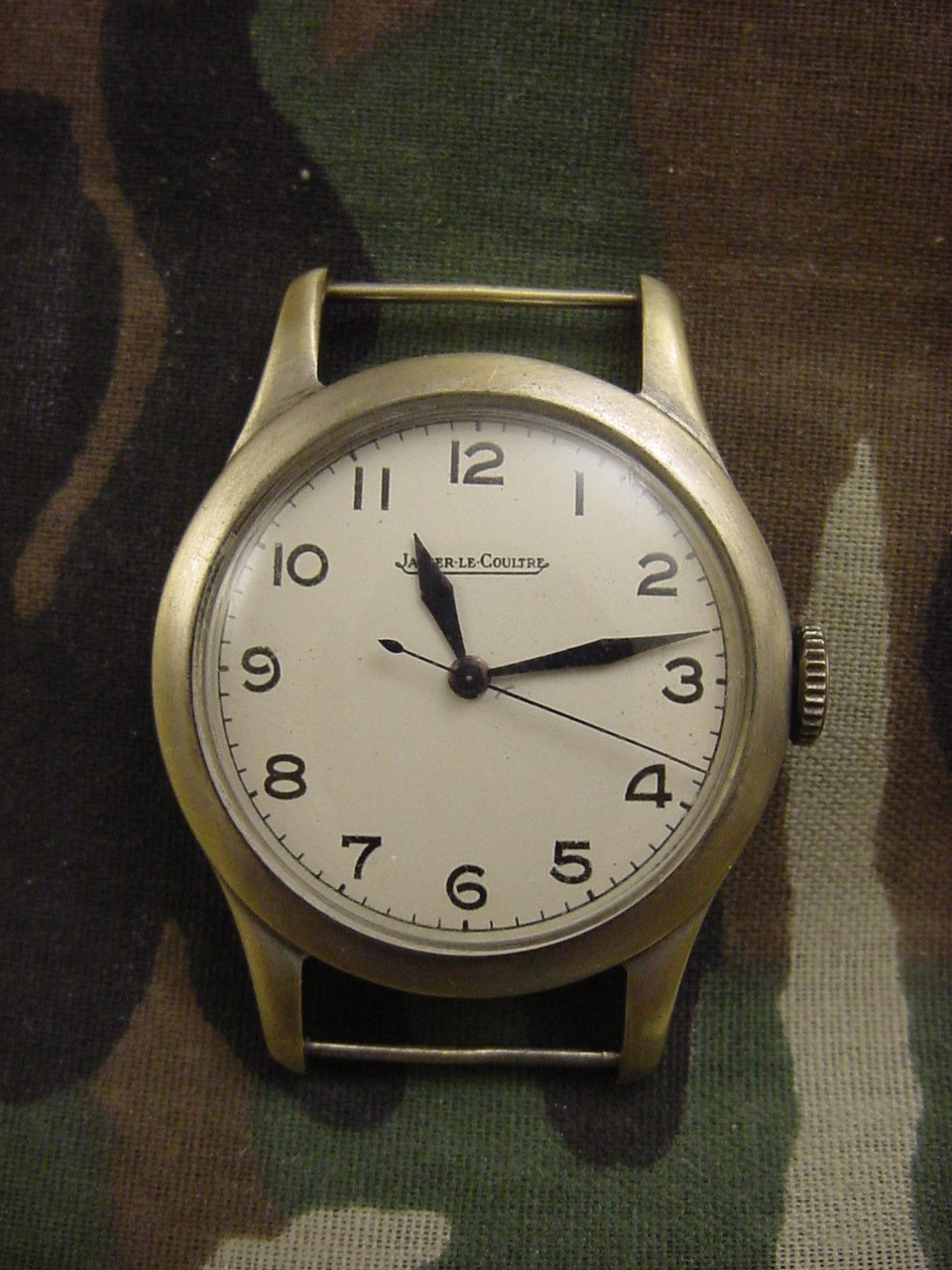
PHOTO: thehackwatch.com
At the start of Great Britain’s involvement in the war, new watchmaking practices were being adapted to create watches that would be waterproof, thus eliminating any need for a soldier to be overly cautious about what was on his wrist. Britain’s watchmakers were too busy supporting the war effort back home, so instead, twelve Swiss companies were enlisted to create the British WWW (Wrist Watch Waterproof, this was the denotation given by the government), and thus the infamous “Dirty Dozen” was born. These companies were Buren, Cyma, Eterna, Grana, Jaeger-LeCoultre, Lemania, Longines, IWC, Omega, Record, Timor, and finally Vertex. These watches had basic requirements from England, it had to have luminous hands, had to have chronometer certified movements, and of course they had to be waterproof. Collectors beam at the thought of owning the whole lot of the “Dirty Dozen”, yet it is nearly an impossible task, as many aren’t left in the wild due to them being destroyed in large numbers during the 1970’s out of fear of the dangers that lie within Radium. Secondly, Grana only produced a total of 1,000 during the war, and there is no accurate account of how many of those may actually still be out there. This was the everyman’s watch for the British military. It was just as likely that one of these was to be spotted on the wrist of an infantryman as it would have been to see one on the wrist of pilot. It is an extremely influential watch that is recognizable in any circle of watch enthusiasts. For this reason, it most definitely deserves a spot on the top five.
4. The Omega CK2129
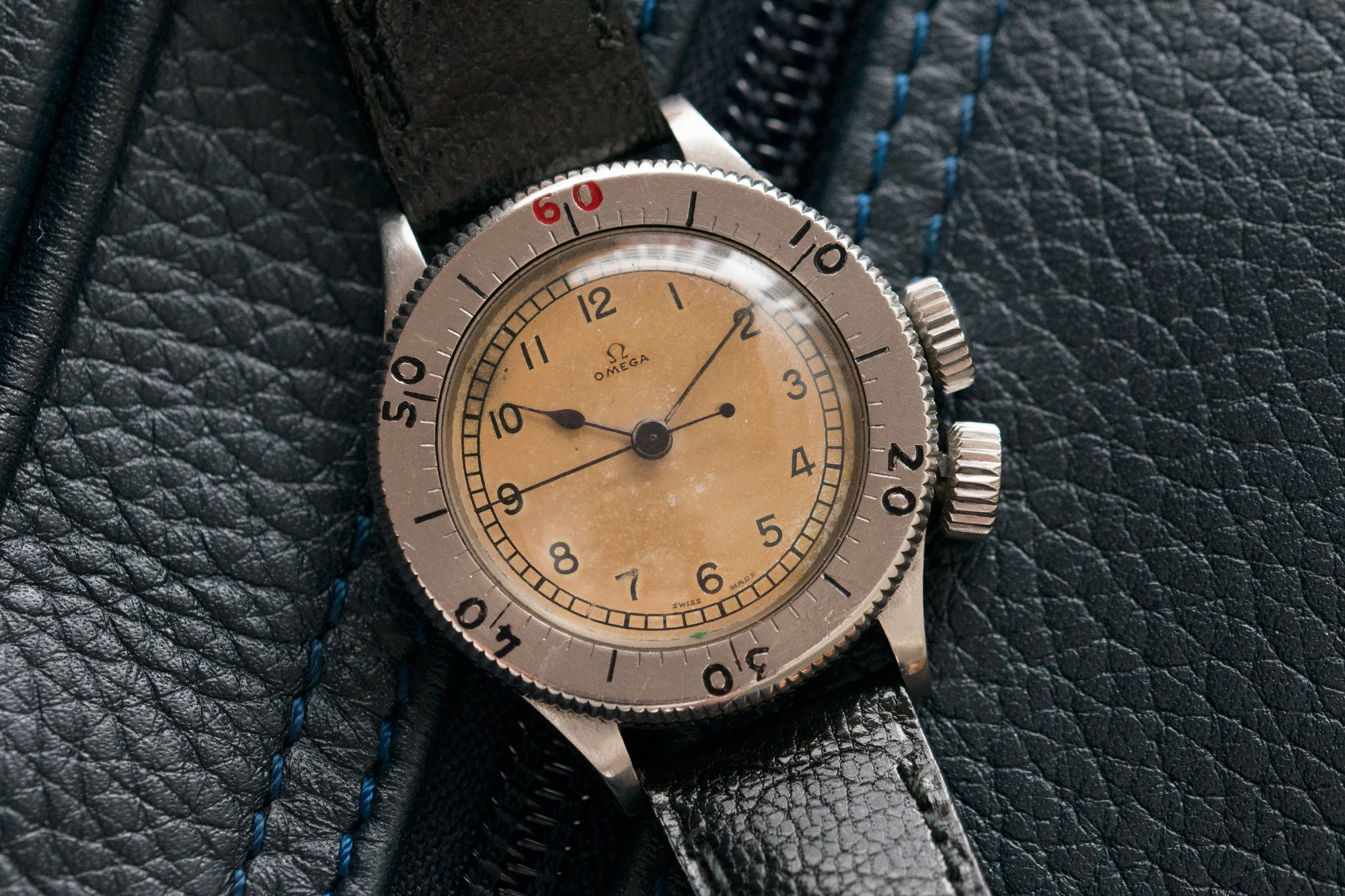
PHOTO: A Collected Man
Omega was at the forefront of production of watches to the Royal Air Force during the war, with some 110,000 units being delivered to the Ministry Of Defense alone. The CK2129 came to be in the earlier part of 1940 when the Ministry decided that it needed watches with rotating bezels to help pilots time certain events while on mission. The result was a tool watch that solved a list of issues that pilots faced while in the cockpit. The CK2129 had a cream dial with blued hands, oversized Arabic numerals and a rotating bezel (of course), and had two large crowns. One crown at the three o’clock controlled the winding and setting of the time while the second crown at the four o’clock was designed to lock the bezel into place to prevent pilots from throwing off their measurements in the tight confines of the planes they flew. The movement inside was just as robust as the ingenuity of the case design. The Calibre 23.4SC was a manually wound movement that was used in a number of other watches that Omega made during this time span. A 40 hour power reserve powers a 2.5Hz movement. This was truly a workhorse that was capable of keeping up with the fast paced action of a dogfight. The RAF used these almost exclusively with other updated variations appearing as the war progressed, but the CK2129 is what launched Omegas foray into purpose driven tool watches for the war effort.
[button color=”black” size=”big” alignment=”center” rel=”follow” openin=”newwindow” url=”https://www.exquisitetimepieces.com/watch-brands/omega-watches.html”]BUY YOUR OMEGA HERE[/button]
3. The Zenith Special
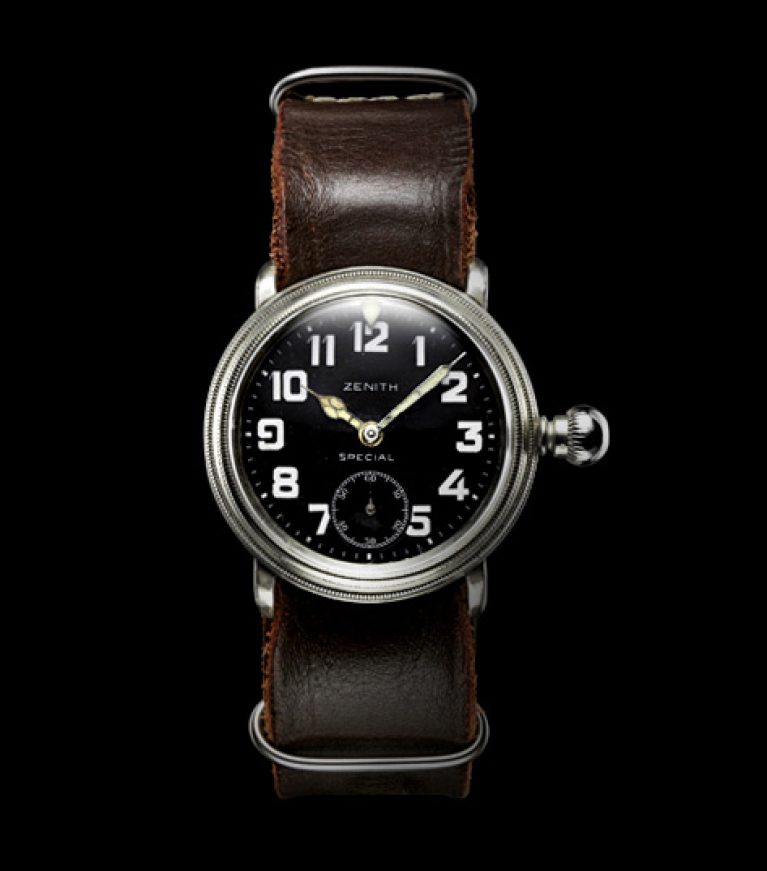
Next up is a legend that still remains with us today. The Zenith Special Pilot watches were used widely by many forces during the war, by both pilots and bombers alike. The Zenith Special came in many different configurations, but the distinct fixed lugs and knurled bezel make this an instant icon that almost anybody can recognize. In 1939, the Type 20 Montre d’Aeronef was created to emulate the dash clocks that Zenith was making for the gauge clusters in the plane. Large numerals and large hands provided simple legibility that was appreciated by both sides during the war. Zenith took the middle road and didn’t claim any allegiance to either the Axis or Allied powers, and as such, both sides used this watch extensively for air missions that required the best in timekeeping. Manual wound, these watches have the typical pilot aesthetic that was common to the times. Zenith did not exclusively use this case design, as many other manufacturers such as Helvetia also utilized the same pilot’s case with a large onion crown at the three o’clock, a popular feature that allowed for easy winding and setting of time while in aviation gloves. Any vintage Zenith Special is sure to be a watch that has seen lots of action and would surely have many stories to share if it could talk. The Zenith Specials can be found with everything from a small seconds function to a red tipped marker that can controlled by the knurled bezel to help track time. There truly is an unknown number of variations of the Special, but all of them were worn and used by men and women who trusted their lives to it.
2. The Type A-11
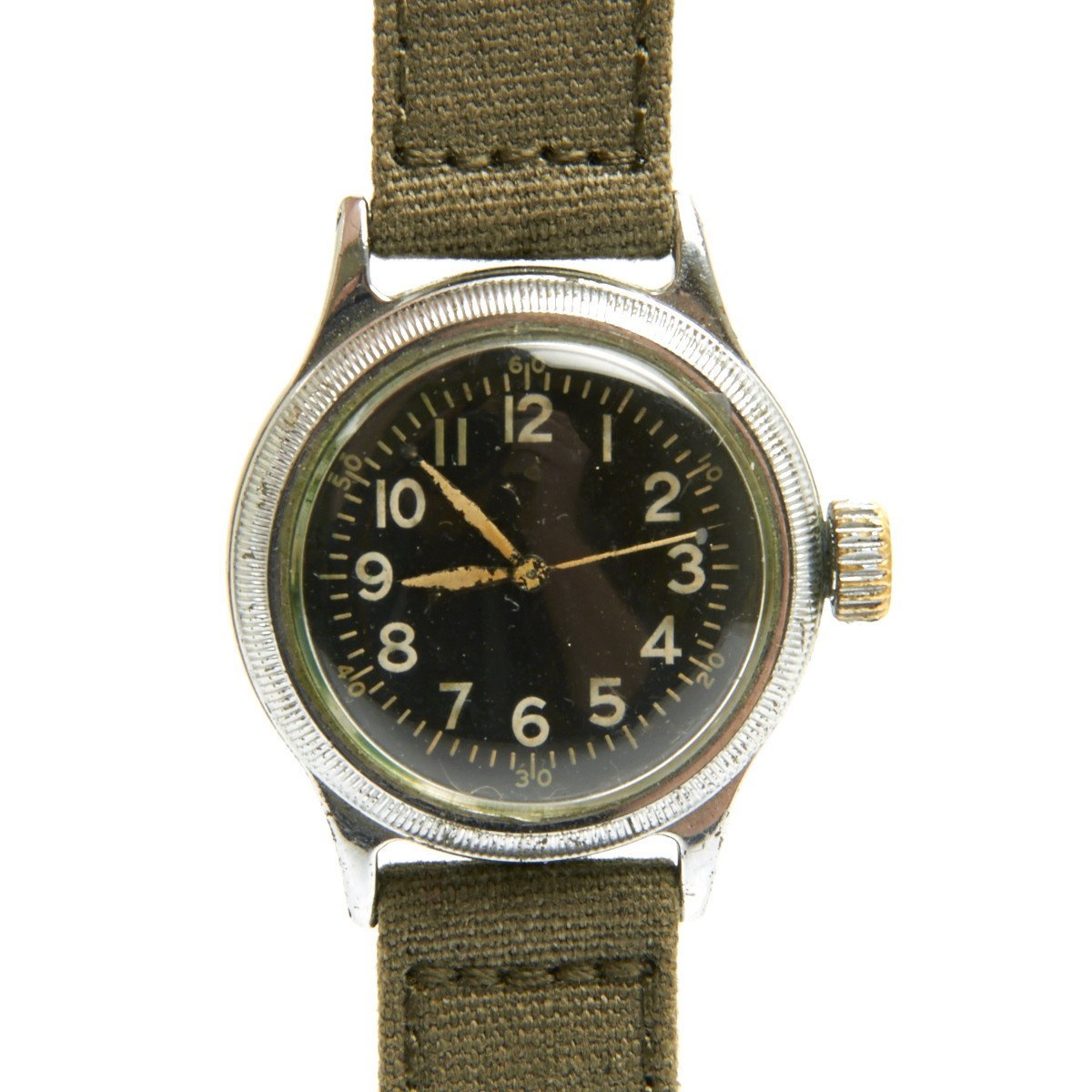
PHOTO: ima-usa.com
American horology is often overlooked, and sometimes it is understandably so. The A-11 was another story, however. This watch was used by the US forces extensively, with tens of thousands being issued by to its troops, all created by three giants of American watchmaking at the time, being Bulova, Waltham, and Elgin. Although this may not specifically be a pilot’s watch, it was a common sight on the American airman’s wrist while running missions. The A-11 had legibility in mind when requested by the war department, with its black dial marked with white indices being just about the most readable combination at the time. The A-11 also comes in a dizzying amount of combinations (are you seeing a theme yet?), with some examples having a coin edge bezel, some having waterproof capabilities while others were dustproof. There are also examples that had luminous paint and some did not, again, all dependent on the manufacturers orders. As a part of the US government’s demands for this field watch, it was a necessity that these watches had a hacking function to ensure that all troopers were on the same page before starting a mission. It was commonplace to have a meeting before missions and bombing runs to synchronize everybody’s watch at the same time, down to the second. It was that important. There is no shortage of A-11s on the market, but beware of watches that have been extensively modified from their original condition. These were designed to completely interchangeable with other A-11 watches for obvious reasons. Uniformity is the name of the game when it comes to military gear. This American classic is a living legend that comes from the Greatest Generation, and any watch that survived the hell of WWII is a winning creation in my book.
1. The B-UHR
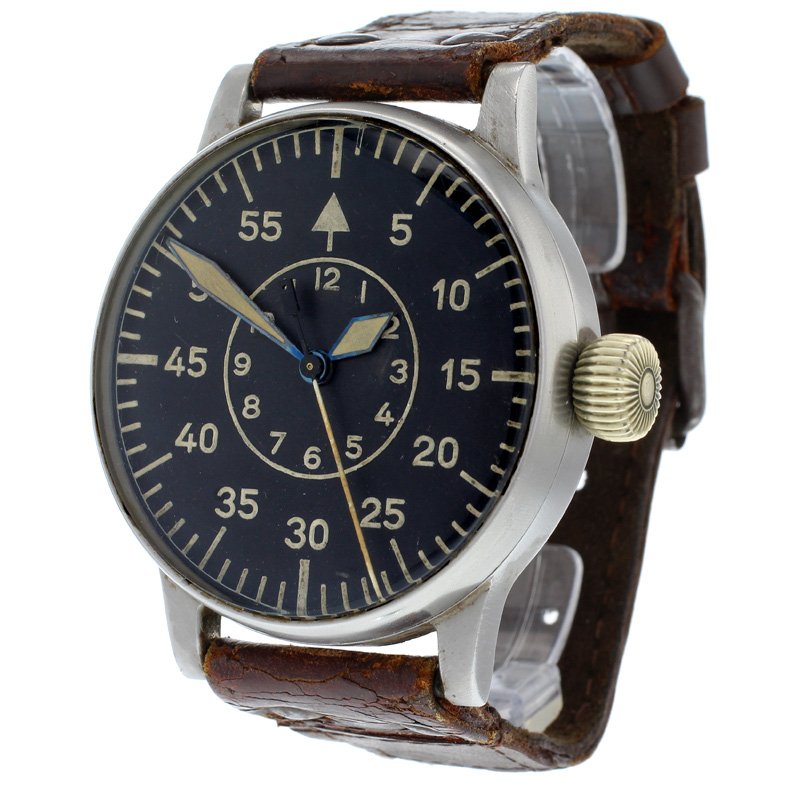
PHOTO: watches.co.uk
Nazi Germany was nothing to balk at when it came to precision instruments, and the massive B-UHR is living proof that the Germans knew exactly what a pilot needed in the middle of the action. Measuring at 55mm across, this behemoth doesn’t seem like something anyone would be able to wear on their wrist. This is because the B-UHR was created to accommodate the large and puffy flight jackets that pilots wore out of necessity to combat the low temperatures at high altitudes. The second reason it is so large is because this provides the wearer with an unhindered view at the time. Its large numerals and heavily lumed dial made for what is most definitely the most legible and neatly arranged dial out of all the pilots. It’s a surgically precise layout, with its iconic triangle marker at the 12 o’clock and large white numerals against a black dial, all guided by massive blued sword hands. The B-UHR was fitted with an iron cage to shield itself from magnetism, an issue always possible to arise while piloting. They utilized Breguet hairsprings and were synchronized to radio waves, just to give you an idea about how serious the Germans were about the accuracy of these watches. A total of five watchmakers were tasked with creating the B-UHR, A. Lange and Söhne (I know, right?), Wempe, Laco, Stowa, and IWC to a certain degree. All of these companies manufactured the watch to the highest of specifications, with Wempe and Stowa showcasing Swiss made movements while Laco and A. Lange and Söhne were the only makers to develop their movements entirely in house. While it is not practical by any means to wear on a naked wrist, the sheer history behind the watch and the craftsmanship utilized to create the B-UHR was second to none, and finding a survivor today is a benchmark for many vintage collectors.
There is no shortage of history in any of the five watches described above. The Second World War was the defining moment of the 20th century, and to be able to have the opportunity to own one of these is a humbling experience indeed. Some of these watches have seen mass bloodshed. Some fought on the wrong side. Some of them may have seen nothing at all. This is the allure that resides within the vintage military watch genre. You truly never know whose watch you are holding or what it has seen or been a part of. Aviation was made achievable with these precise instruments, and we as collectors have a lot to be thankful for when we look at what it is we are actually in possession of. After the war was long over with, aviation would never be the same and the watch evolved with the changing times. These classics tell that story, the story of someone who left home at a young age and was entrusted to fly a multi-ton hunk of aluminum and never knew if they would be lucky enough to see home again. These watches are all that is left of them…

